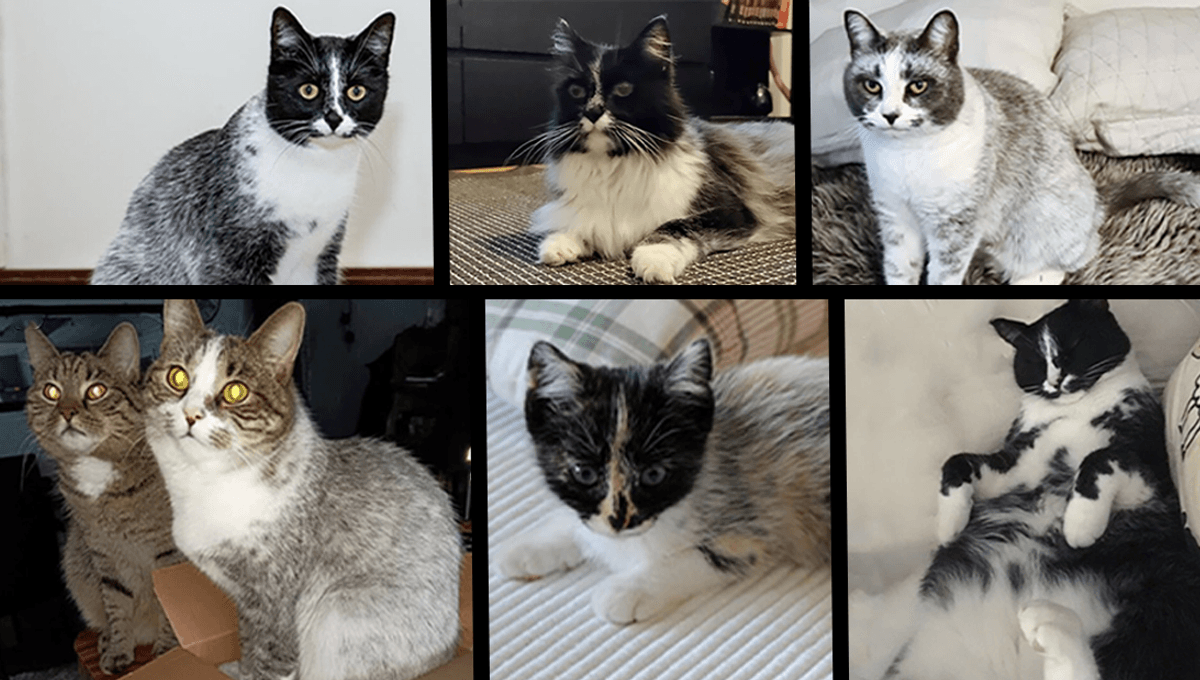
Cats come in a glorious variety of colors and coat patterns, and back in 2007, a brand-new flavor of feline appeared in Finland, looking like the black printer ink had run out. Named after a type of licorice popular in the country, scientists have now figured out the genetic basis for these distinctive and delicious-looking cats.
You’d be lucky to come across one of these kitties out and about. Though they’ve since made it out of the single feral population they were first spotted in, they’re still a rare find. What makes them stand out from the crowd, however, is their unusual coat.
They share much of the same pattern as “tuxedo” cats, with a white chest, belly, and paws, though the coat has also been seen in tabbies and tortoiseshells. Their back fur, on the other hand, is something of an ombre moment, with black coloration at the base of the hair gradually fading to white at the tips.
In a new study, a team of scientists dubbed this the “salmiak” phenotype – an observable trait with a genetic basis – due to its similarity in color to the salty variety of licorice common in Finland, and sought to find out its molecular cause.
But when the team searched the cats’ DNA for the variants that typically affect white coat coloration, these classic mutations were nowhere to be found, leaving them somewhat… purr-plexed.
Not giving up, the team members from the University of Helsinki put out a call to the public in search of further licorice cats to analyze. This time, they focused on the KIT gene, variants of which are often associated with different white coat patterns in many animals.
After conducting whole genome sequencing on two licorice cats, again, there were no variants of note to be found in the gene. However, there was a mutation downstream of it – a pretty big one, in fact, as around 95,000 of the base pairs that make up DNA had been deleted.
Found in both of the cats tested, it’s a mutation that could certainly influence the expression of KIT and, as a consequence, lead to the distinctive coat pattern.
To confirm this, the researchers tested another group of house cats, some of which had the salmiak phenotype. These salmiak cats were found to have two copies of the mutation, whilst another three non-salmiak cats were found to have one copy. The remaining non-salmiak cats had no copies.
Not only did this help to confirm that the mutation the team identified was most likely responsible for the distinctive coat color, but that it’s also recessive. This means that in order for a cat to be licoriced, both of its parents have to carry at least one copy of the variant.
“The discovery of the salmiak variant enriches our understanding of feline coat color genetics. But that’s not all,” said study author Heidi Anderson in a blog post. “This knowledge could also be valuable for breeding efforts, potentially contributing to the preservation of this trait in our feline companions.”
The study is published in the journal Animal Genetics.
[H/T: New Scientist]
Source Link: Striking “Salty Licorice” Cats Are The Result Of A Unique Mutation